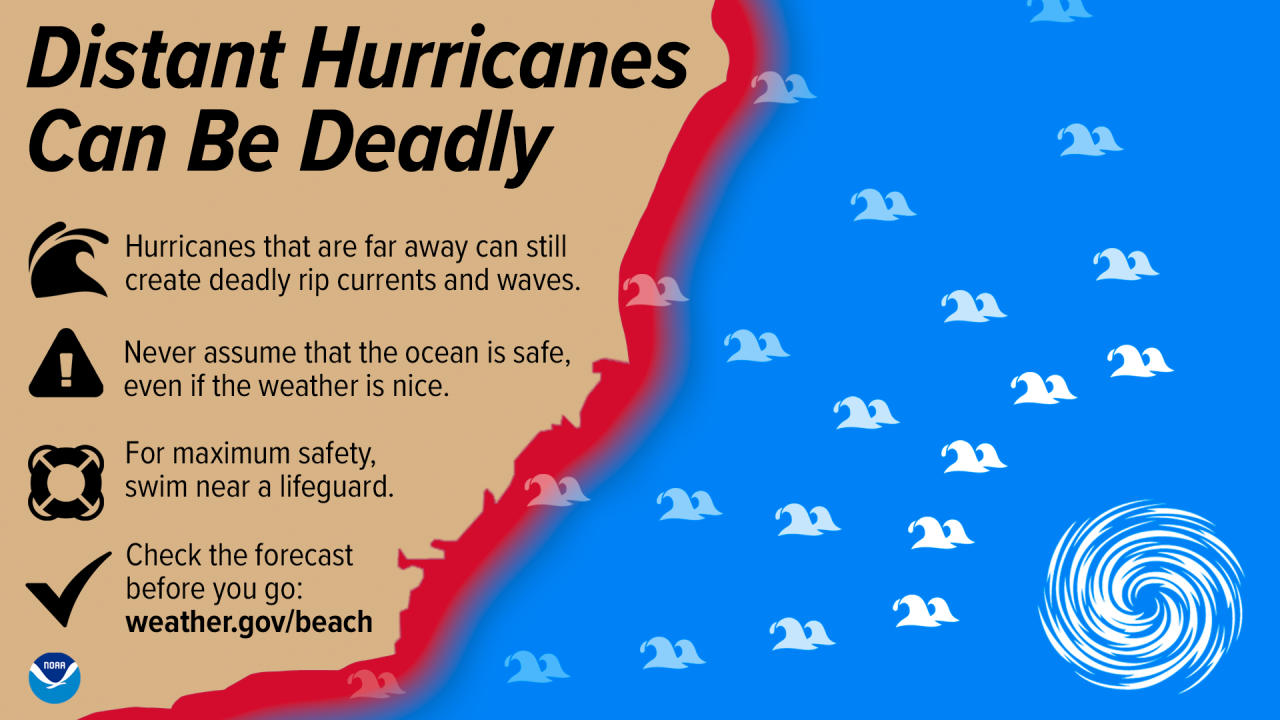As Hurricane Erin churns up the ocean off the East Coast, warnings have gone up concerning rip currents.
And while the talk may be centered around a hurricane, rip current dangers increase during warmer months, from April to October. Conditions get more dangerous after storms, because strong offshore winds can increase the velocity of waves.
We hear about rescues and warnings, but we don't often hear about injuries. So, WMAR-2 News is taking an In Focus look at rip currents, hearing from those who come into contact with people injured by rough ocean waters.
We asked Cheyenne Falat, MD, FACEP, Assistant Medical Director of the University of Maryland Medical Center's Emergency Department and Assistant Professor at the UM School of Medicine, questions about the types of injuries ERs often see and the overall danger of rip currents.
How quickly can someone be in serious medical danger when caught up in a rip current?
Rip currents are localized, narrow, and powerful currents that carry fast-moving water away from the shore and out to sea. If caught in a rip current, people can find themselves in serious danger within seconds or minutes. The primary danger is not necessarily being dragged underwater, but rather the exhaustion that comes from trying to swim into the current, which can lead to further medical complications.

What makes the situation better/worse?
If you find yourself being pulled out to sea in a rip current, remain calm and swim parallel to the shore to escape the narrow current. Once out of the current, swimming back to shore becomes easier. Avoid panicking and do not attempt to swim to shore against the rip current - this will lead to further exhaustion and an increased risk of drowning.
What are the common injuries sustained by someone who gets caught up in a rip current?
While some physical injuries (such as spinal or soft tissue injuries) are possible from wave breaks or having the current drag you into jetties or rock formations, most of the dangers from rip currents are due to exhaustion and drowning. Prolonged water exposure can also lead to hypothermia.
Assuming the person survives, what’s the impact on the body/muscles?
Intense exhaustion sustained by swimmers who try to swim against a rip current can lead to muscle breakdown (called rhabdomyolysis), which can eventually lead to kidney failure if left untreated. People who experience an aspiration or drowning event can also experience drowning-related lung injury - recovery from mild injury can take minutes to hours, whereas recovery from more serious lung injuries can be prolonged and require support with a breathing tube and ventilator machine. Additionally, people who suffer a near-fatal event can experience longer-lasting psychological injury and PTSD.

When someone encounters a rip current they often panic; what advice can you give to prevent people from panicking?
Although easier said than done, remain calm! Roll over on to your back to take a float break if needed, and then swim parallel to the shore (swim "with" the shore, not "to" the shore).
What can be done to prevent rip current related injuries?
The best way to prevent rip current injuries to know how to recognize them, know how to avoid them, and know how to escape them. Whenever possible, swim at beaches that are protected by lifeguards, and always listen to warnings from local lifeguards, posted danger signs, and surf forecasts.

What are some other dangers of summertime at the beach that folks need to be on the lookout for?
Rip currents are not the only beach-related dangers during the summertime! Other potential dangers can include heat stroke (learn to recognize the early warning signs of heat exhaustion and make sure that you have a plan to stay cool and stay hydrated), lightning strikes ("when thunder roars, go indoors" for at least 30 minutes after the last thunderclap), marine envenomations (know what the dangerous marine creatures in your area look like so that you can avoid them), anaphylactic allergic reactions from food or insect exposures, and blunt or penetrating traumatic injuries (including from wave breaks near shore, surfboards, floating debris, boat motors, or dislodged & flying beach umbrellas). Knowing these risks and taking steps to minimize them can ensure a fun AND safe day at the beach!
In Summary
Rip currents can turn deadly within seconds - The main danger isn't being dragged underwater, but exhaustion from fighting the current, which can lead to muscle breakdown, kidney failure, and drowning-related lung injuries that may require ventilator support.
• Survival depends on staying calm and swimming smart - Don't panic or try to swim directly back to shore against the current. Instead, float on your back to rest, then swim parallel to the shoreline until you escape the narrow current before heading back to the beach.
• Prevention is key, but beaches have multiple summer dangers - Swim at lifeguarded beaches, heed warning signs, and watch for other threats like heat stroke, lightning, dangerous marine life, allergic reactions, and injuries from waves or beach equipment.



